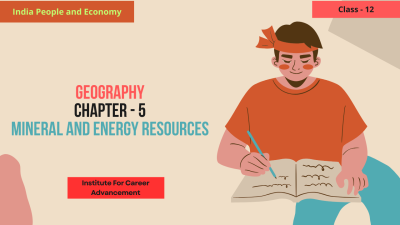The World Population - Distribution, Density, and Growth - Class 12
This chapter explores how humans are distributed across the Earth, the factors influencing population density, and the patterns of population growth worldwide. Key Points: Population Distribution: People are unevenly spread across the globe, with most concentrated in specific regions. Population Density: Measures how crowded an area is by dividing population by land area. Population Growth: Examines the rate at which the world's population is increasing, including factors affecting this growth. Factors Influencing Distribution and Density: Geographical, climatic, economic, and social factors impact where people live. Consequences of Population Growth: Discusses challenges and opportunities associated with population changes. By studying this chapter, you will understand the complexities of global population patterns and their implications for society and the environment. এই অধ্যায়টি পৃথিবী জুড়ে মানুষের বিতরণ, জনসংখ্যার ঘনত্বকে প্রভাবিত করার কারণগুলি এবং বিশ্বব্যাপী জনসংখ্যা বৃদ্ধির নিদর্শনগুলি অন্বেষণ করে। মূল বিষয়গুলোঃ জনসংখ্যার বণ্টনঃ মানুষ বিশ্বজুড়ে অসমভাবে ছড়িয়ে রয়েছে, যার মধ্যে বেশিরভাগই নির্দিষ্ট অঞ্চলে কেন্দ্রীভূত। জনসংখ্যার ঘনত্বঃ ভূমি দ্বারা জনসংখ্যাকে ভাগ করে একটি এলাকা কতটা জনবহুল তা পরিমাপ করে। জনসংখ্যা বৃদ্ধিঃ এই বৃদ্ধিকে প্রভাবিত করে এমন কারণগুলি সহ বিশ্বের জনসংখ্যা বৃদ্ধির হার পরীক্ষা করে। বন্টন ও ঘনত্বকে প্রভাবিত করার কারণঃ ভৌগলিক, জলবায়ু, অর্থনৈতিক ও সামাজিক কারণগুলি মানুষের বসবাসকে প্রভাবিত করে। জনসংখ্যা বৃদ্ধির ফলাফলঃ জনসংখ্যা পরিবর্তনের সাথে সম্পর্কিত চ্যালেঞ্জ এবং সুযোগগুলি নিয়ে আলোচনা করে। এই অধ্যায়টি অধ্যয়নের মাধ্যমে, আপনি বিশ্বব্যাপী জনসংখ্যার ধরণগুলির জটিলতা এবং সমাজ ও পরিবেশের জন্য তাদের প্রভাবগুলি বুঝতে পারবেন।
English
Last updated
Wed, 27-Nov-2024



















